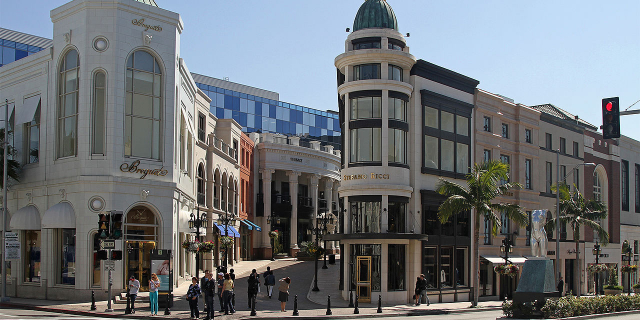Venice Canal Historic District
The Venice Canal Historic District is embedded in the residential Venice suburb of Los Angeles, California. The historic district is noteworthy for possessing man-made wetland canals, built in 1905 by developer Abbot Kinney as part of his Venice of America. Kinney sought to recreate the appearance and feel of Venice, Italy, in coastal Los Angeles County. The names of the canals were given by Abbot Kinney as follows: Aldebaren Canal, Altair Canal, Cabrillo Canal, Coral Canal, Grand Canal, Lion Canal and Venus Canal.
Another set of canals were built south of the Venice Canals, originally known as the New Amsterdam Canals by investors and architects, namely Howland, Sherman and Clark, land owners whom two canals were named after. These canals are roughly bounded by Eastern Court on the east, Court A on the south, Strongs Drive on the west, and Court E on the north. There are four east-west canals (Carroll Canal, Linnie Canal, Howlan...Read more
The Venice Canal Historic District is embedded in the residential Venice suburb of Los Angeles, California. The historic district is noteworthy for possessing man-made wetland canals, built in 1905 by developer Abbot Kinney as part of his Venice of America. Kinney sought to recreate the appearance and feel of Venice, Italy, in coastal Los Angeles County. The names of the canals were given by Abbot Kinney as follows: Aldebaren Canal, Altair Canal, Cabrillo Canal, Coral Canal, Grand Canal, Lion Canal and Venus Canal.
Another set of canals were built south of the Venice Canals, originally known as the New Amsterdam Canals by investors and architects, namely Howland, Sherman and Clark, land owners whom two canals were named after. These canals are roughly bounded by Eastern Court on the east, Court A on the south, Strongs Drive on the west, and Court E on the north. There are four east-west canals (Carroll Canal, Linnie Canal, Howland Canal, and Sherman Canal) and two north-south canals (Eastern Canal and Grand Canal). The lit canals with gondoliers and arched bridges drew widespread publicity and helped sell lots in the development.
By the 1920s, with cars quickly gaining popularity, the canals were viewed by many as outdated, and as a result a number of canals were filled in 1929 to make room for paved roads. By 1940 the remaining canals had fallen into disrepair, and the sidewalks were condemned by the city. The district remained in poor condition for more than 40 years; numerous proposals to renovate the canals failed due to lack of funding, environmental concerns, and disputes as to who should bear the financial responsibility. The canals were finally renovated in 1992; they were drained, and new sidewalks and walls were built. The canals re-opened in 1993, and have become a desirable and expensive residential section of the city.
The residential district surrounding the remaining canals was listed on the National Register of Historic Places in 1982. However, in recent years, there has been extensive renovation work on many of the old houses, and many large, modern houses have been built.
The water enters the canals through sea gates in the Marina Del Rey breakwater via the Ballona Lagoon, and again in Washington Boulevard. They open at low tide to drain most of the water, and at high tide they are closed, trapping the water for about three days, before being refreshed again.



































Add new comment